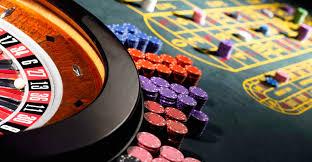The Evolution of Slot Machines: From Mechanical Reels to Digital Wonders

Slot machines have come a long way since their humble beginnings more than a century ago. What started as a simple mechanical game with spinning reels and a lever has transformed into a digital entertainment powerhouse enjoyed by millions around the world. The journey of slot machines is not just about technology; it’s also a reflection of how human fascination with chance, excitement, and innovation continues to evolve.
The story of slot machines begins in the late 1800s with the invention of the Liberty Bell by Charles Fey. This early machine featured three spinning reels and a lever that players pulled to set them in motion — giving rise to the nickname “one-armed bandit.” The game’s symbols, including bells, horseshoes, and playing cards, were simple but effective in capturing players’ attention. Winnings were modest, and payouts were often in the form of coins or even items like chewing gum and drinks, but the excitement of watching the reels align was irresistible.
By the early 20th century, slot machines were found in bars, saloons, and casinos across the United States. Manufacturers began experimenting with new symbols, such as fruits and bars, which remain popular to this day. These mechanical slots relied entirely on gears and springs to spin the reels, and their inner workings fascinated players as much as the thrill of winning. However, these early machines also had limitations — they could only handle a few symbols and offered very limited payout combinations.
The next major evolution came in the 1960s with the introduction of electromechanical slot machines. This innovation replaced many of the mechanical components with electrical parts, allowing for more complex gameplay, higher payouts, and flashing lights that made the experience more exciting. Bally’s “Money Honey,” released in 1963, was the first fully electromechanical slot machine. It could automatically pay out up to 500 coins without the need for an attendant — a revolutionary feature at the time. Players were drawn to the bright lights, the sound of coins clinking, and the possibility of winning big.
As technology advanced, the 1970s and 1980s saw the rise of video slots, which marked a true turning point in casino gaming. Instead of physical reels, these machines used computer screens to simulate spinning reels. This shift opened endless creative possibilities for game designers. Video slots could feature more symbols, bonus rounds, animations, and even storylines. Games like “Reel ’Em In,” launched in the 1990s, became hugely popular because they offered an interactive and visually stimulating experience unlike anything seen before.
The arrival of the internet in the late 1990s and early 2000s brought the next major transformation — online slot machines. Players no longer needed to visit physical casinos to enjoy their favorite games. They could now spin the reels from their homes using computers, and later, on smartphones and tablets. Online slots also introduced progressive jackpots, where the prize pool grows every time someone plays, often reaching millions of dollars. This new era made slot gaming accessible to anyone, anywhere, at any time.
Today, we are in the age of digital wonders. Modern slot machines feature high-definition graphics, cinematic soundtracks, and immersive themes inspired by movies, mythology, and adventure. Advanced technologies such as 3D animation, augmented reality, and artificial intelligence are shaping the next generation of slot games. Players can enjoy hundreds of themes, personalized rewards, and social features that make the experience more engaging. Online platforms like iosbet offer an even wider range of slot games, allowing users to experience the excitement of casino play directly on their mobile devices.
Another fascinating trend is the integration of blockchain technology and cryptocurrency into the world of slot gaming. Some modern casinos are now offering transparent, provably fair gaming experiences using blockchain systems. This ensures that every spin is random and verifiable, increasing player trust. Meanwhile, the use of digital payment methods and crypto wallets makes playing faster, safer, and more convenient.
Looking ahead, the future of slot machines seems more innovative than ever. Developers are experimenting with virtual reality (VR) environments, where players can step inside a 3D casino and pull virtual levers as if they were physically there. Artificial intelligence will also play a growing role, personalizing game experiences and adjusting difficulty levels based on player behavior.
From the simple mechanical reels of the Liberty Bell to today’s high-tech digital platforms, slot machines have evolved beyond imagination. What once started as a basic gambling device has become a global form of entertainment powered by creativity, design, and technology. Whether played in a casino or online, slot machines continue to capture the excitement of chance and the joy of discovery — proving that even in the digital age, the thrill of the spin never fades.
- Biografi
- Sanat
- Bilim
- Firma
- Teknoloji
- Eğitim
- Film
- Spor
- Yemek
- Oyun
- Botanik
- Sağlık
- Ev
- Finans
- Kariyer
- Tanıtım
- Diğer
- Eğlence
- Otomotiv
- E-Ticaret
- Spor
- Yazılım
- Haber
- Hobi
